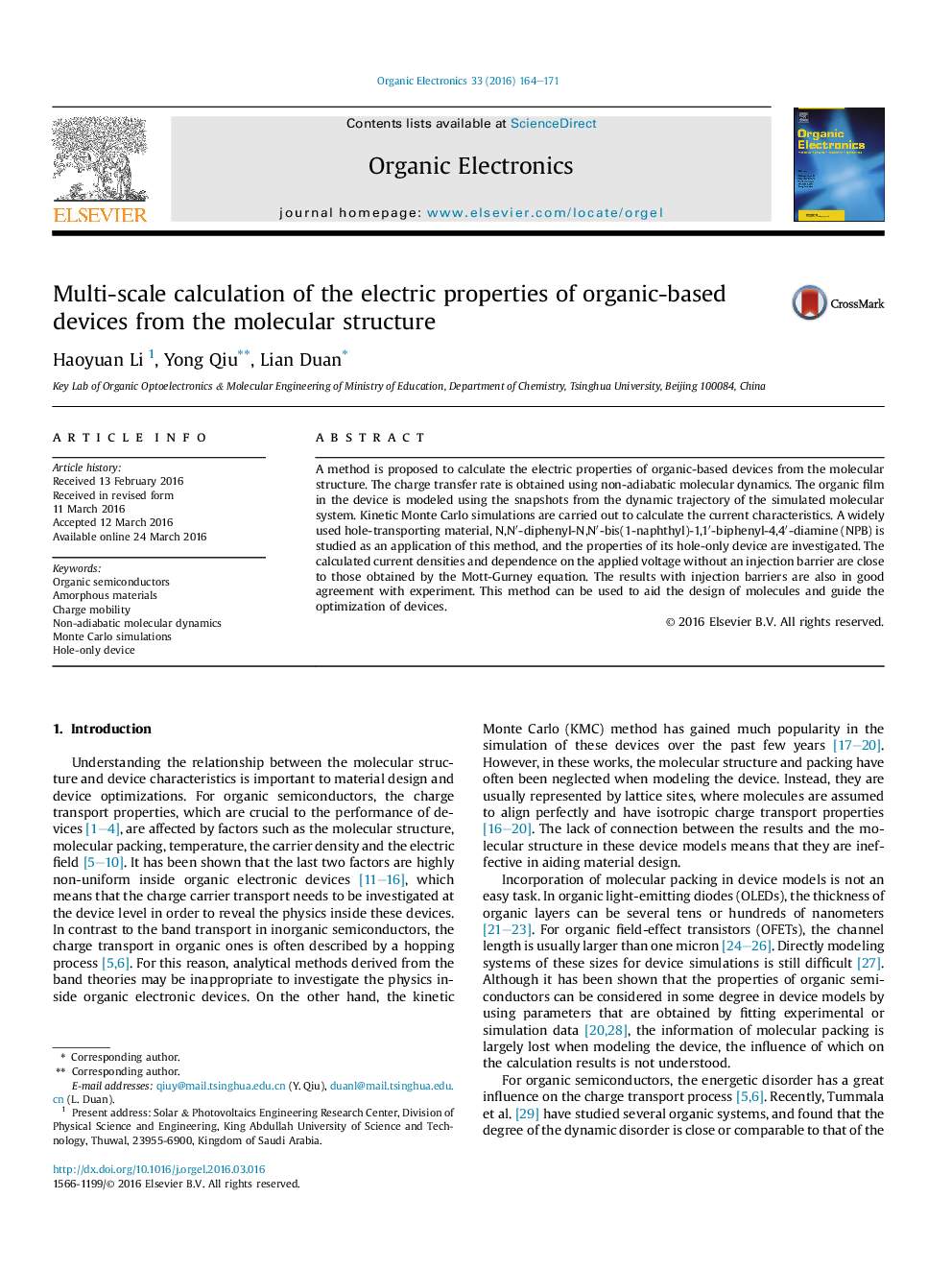| Article ID | Journal | Published Year | Pages | File Type |
|---|---|---|---|---|
| 1264227 | Organic Electronics | 2016 | 8 Pages |
•A method is proposed to calculate the electric properties of organic-based devices from the molecular structure.•Snapshots from the dynamic trajectory are used to model the organic film in the device.•Calculated current densities of a hole-only device are reasonable comparing with experimental results.•This method can be used to aid the design of molecules and guide the optimization of devices.
A method is proposed to calculate the electric properties of organic-based devices from the molecular structure. The charge transfer rate is obtained using non-adiabatic molecular dynamics. The organic film in the device is modeled using the snapshots from the dynamic trajectory of the simulated molecular system. Kinetic Monte Carlo simulations are carried out to calculate the current characteristics. A widely used hole-transporting material, N,N′-diphenyl-N,N′-bis(1-naphthyl)-1,1′-biphenyl-4,4′-diamine (NPB) is studied as an application of this method, and the properties of its hole-only device are investigated. The calculated current densities and dependence on the applied voltage without an injection barrier are close to those obtained by the Mott-Gurney equation. The results with injection barriers are also in good agreement with experiment. This method can be used to aid the design of molecules and guide the optimization of devices.
Graphical abstractFigure optionsDownload full-size imageDownload as PowerPoint slide
